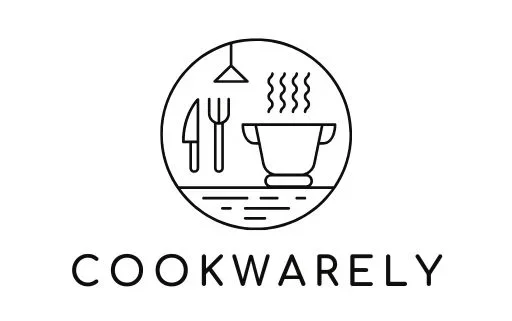Can Chafing Dishes Go In The Oven? What You Need to Know
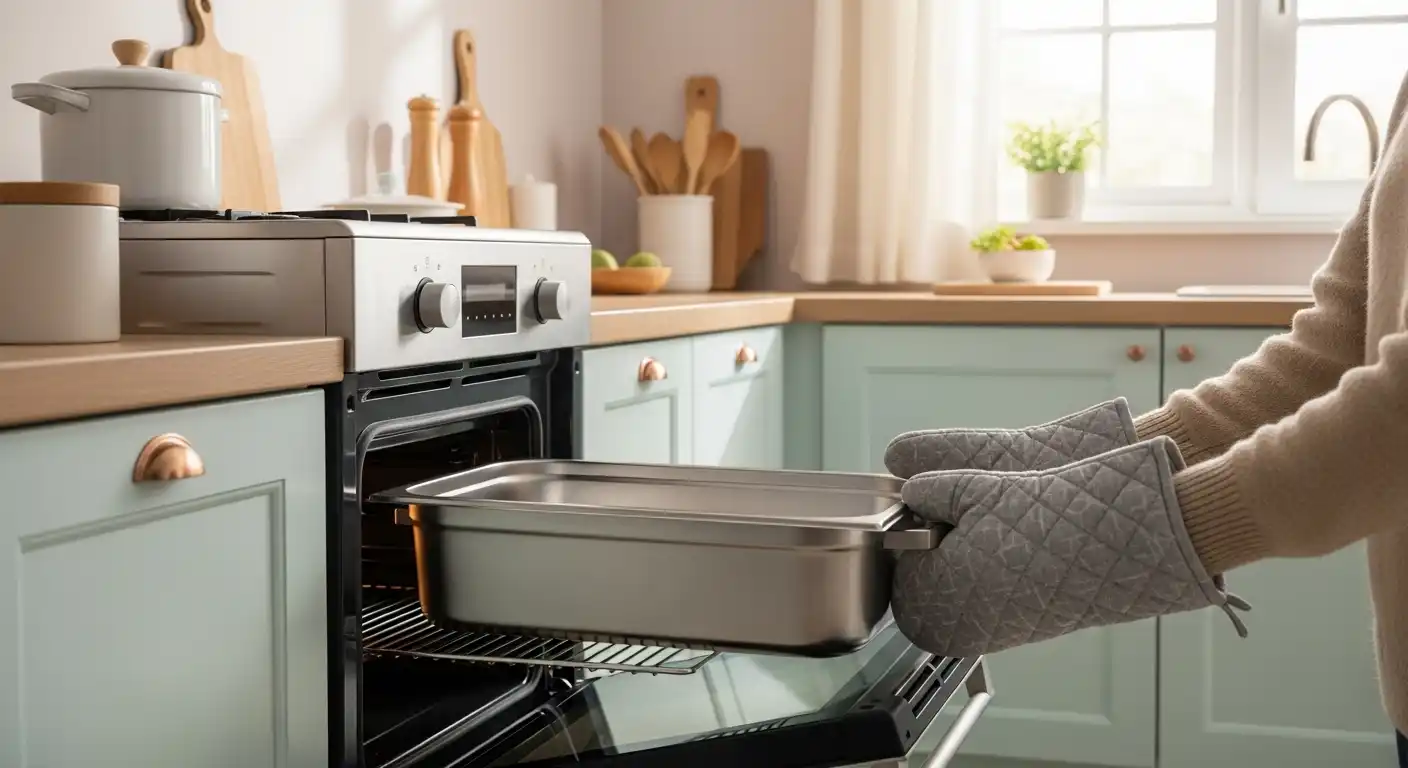
Chafing dishes are a popular tool for keeping food warm at parties, buffets, and catered events.
But if you’re wondering, can chafing dishes go in the oven?, the answer requires some nuance and depends on the type of chafing dish you have.
In this comprehensive guide, we’ll explore whether chafing dishes are oven-safe, how to use them properly, and some alternative methods for heating and serving food.
Whether you’re a seasoned caterer or a home entertainer, this article will help you understand the ins and outs of chafing dish oven use.
🎃 Spooky Good Amazon Deals This Fall !
From cozy fall essentials to Halloween must-haves, shop Amazon’s seasonal discounts now. Don’t wait, deals vanish fast!
*As an Amazon Associate, I earn from qualifying purchases.
What Are Chafing Dishes Designed For?
Before diving into whether chafing dishes can be used in the oven, it’s important to understand their intended purpose.
Chafing dishes are designed primarily as food warmers, not cooking vessels.
They use indirect heat—typically from fuel cans or electric heating elements—to maintain food at safe serving temperatures, usually between 140°F and 180°F (60°C to 82°C).
The heat source warms a water pan, which then gently transfers heat to the food pan above via steam or conduction.
This method prevents food from drying out or burning while keeping it warm for extended periods.
For a detailed explanation of how these devices work, you can visit how do chafing dishes work.
Can Chafing Dishes Go In The Oven? The Short Answer
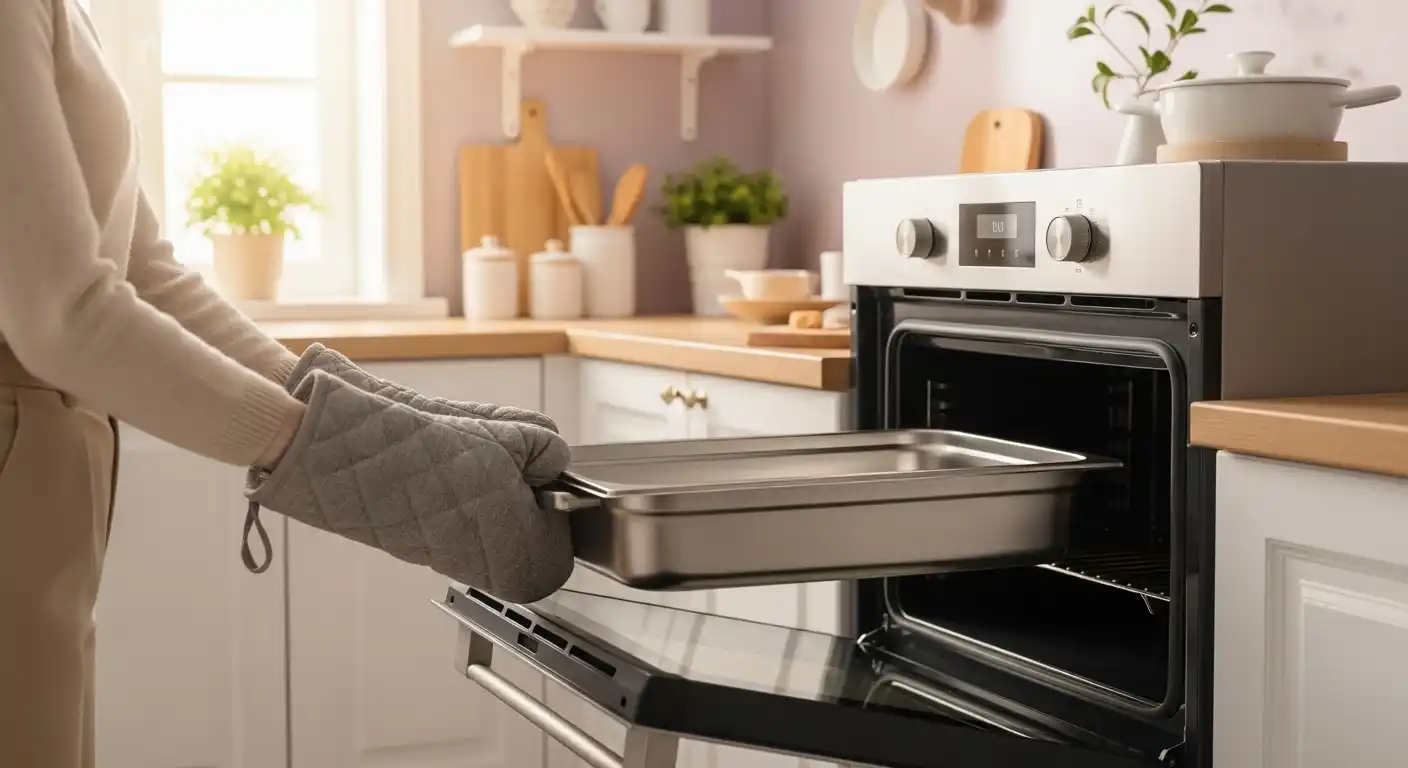
The simple answer is: it depends on the chafing dish and its materials.
- Metal food pans (usually stainless steel or aluminum) that fit inside chafing dishes are often oven-safe and can be used for baking or reheating food in the oven.
- However, the outer frame, water pan, and fuel holders are generally not designed for oven use and may warp, discolor, or be unsafe when exposed to direct oven heat.
Many caterers and home cooks use the inner food pans from chafing dish sets to bake or reheat food in the oven.
Once the food is ready, they transfer the pans to the chafing dish frame for warming and serving.
This technique combines the best of both worlds: oven cooking plus buffet-style warming.
What Materials Are Oven-Safe?
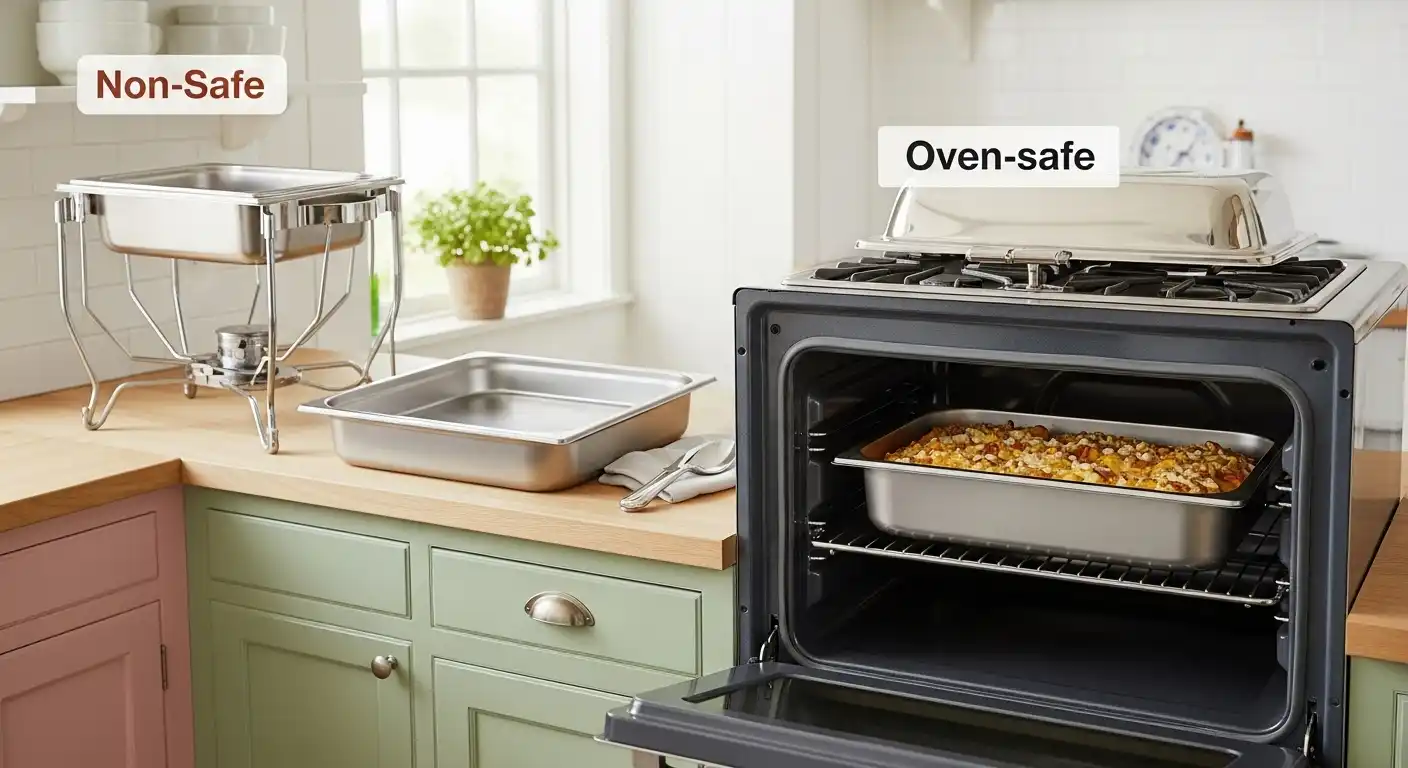
When considering whether your chafing dish can go in the oven, the material is the key factor.
- Stainless steel pans are typically oven-safe up to high temperatures (often 500°F or more), making them versatile for baking casseroles, roasting vegetables, or warming dishes.
- Aluminum pans are also generally safe for oven use but may warp at very high temperatures.
- Plastic or disposable chafing dishes are not oven-safe and will melt or release harmful chemicals if exposed to oven heat.
- The frame and water pan are usually made of metal that is not intended for oven use due to design and safety concerns.
If unsure, always check the manufacturer’s instructions or product specifications.
🎃 Spooky Good Amazon Deals This Fall !
From cozy fall essentials to Halloween must-haves, shop Amazon’s seasonal discounts now. Don’t wait, deals vanish fast!
*As an Amazon Associate, I earn from qualifying purchases.
For more on choosing the right chafing dish, see how to choose the electric chafing dish and best chafing dish buffet set.
How to Safely Use Chafing Dish Pans in the Oven
If you want to use your chafing dish pans in the oven, here are some practical tips:
- Remove the pans from the frame and water pan first. Only the inner pans are suitable for oven use.
- Preheat the oven according to your recipe. Place the pans on a baking sheet if you want easier handling.
- Avoid sudden temperature changes. Don’t place cold pans directly into a hot oven to prevent warping.
- Use oven mitts when handling hot pans. The metal will get very hot.
- After cooking or reheating, transfer the pans back to the chafing dish frame with the water pan filled to keep food warm for serving.
Using this method allows you to bake or reheat food efficiently while still benefiting from the warming function of the chafing dish during your event.
For more on heating chafing dishes and preheating times, check out how long to heat chafing dishes.
Can You Cook Food Directly in a Chafing Dish?
It’s important to clarify that chafing dishes are not designed to cook food. Their maximum temperature is generally too low for cooking or baking.
Cooking food directly on the chafing dish frame or water pan can lead to uneven heating, food safety issues, and damage to the equipment.
If you want to cook or bake food, always use an oven or stovetop first, then transfer the food to the chafing dish for warming.
For more on this topic, see can you cook food in a chafing dish.
What About Disposable Chafing Dishes and the Oven?
Disposable chafing dishes are convenient for one-time use events, but they are typically made of thin aluminum foil and are not recommended for oven use beyond gentle warming.
They can warp or collapse under high heat, and their thin construction means they don’t distribute heat evenly.
If you plan to bake or reheat food, it’s better to use oven-safe pans and then transfer to disposable chafing dishes for serving.
Learn more about disposable options at what is a disposable chafing dish and how to choose disposable chafing dishes.
🎃 Spooky Good Amazon Deals This Fall !
From cozy fall essentials to Halloween must-haves, shop Amazon’s seasonal discounts now. Don’t wait, deals vanish fast!
*As an Amazon Associate, I earn from qualifying purchases.
Alternatives to Using Chafing Dishes in the Oven
If you want to keep food warm and also bake or reheat, consider these alternatives:
- Oven-safe casserole dishes or baking pans for cooking, then transfer to chafing dishes for warming.
- Electric warming trays or buffet servers that plug in and maintain higher temperatures.
- Pizza warmer boxes for keeping pizza warm without drying it out. See can you keep pizza warm in a chafing dish for more pizza warming tips.
- Insulated food bags for transport and short-term warming.
These options allow more flexibility without risking damage to your chafing dish equipment.
Best Practices for Using Chafing Dishes Effectively
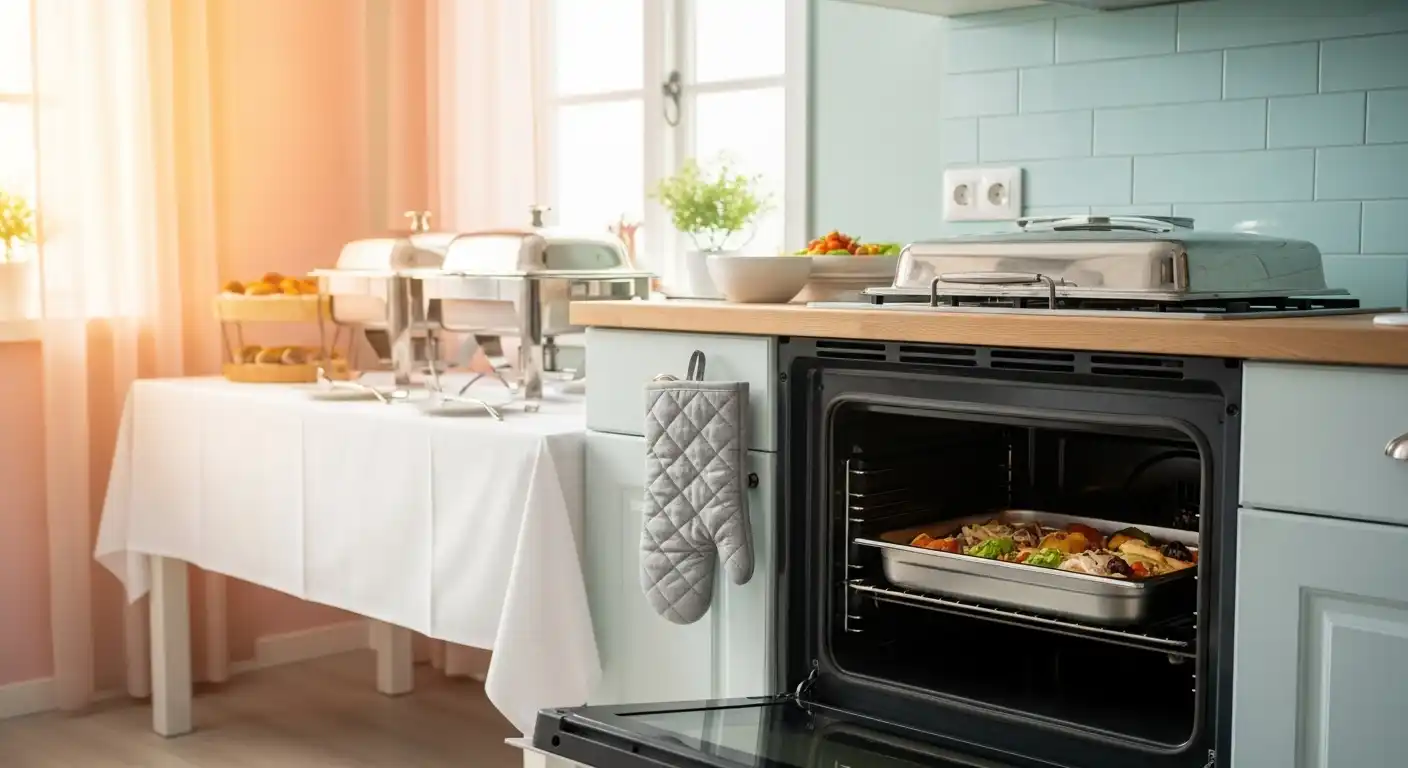
To maximize the performance of your chafing dishes, keep these tips in mind:
- Always preheat your chafing dish water pan before adding food to maintain consistent heat. Learn more at how long to heat chafing dishes.
- Keep the water pan filled to the recommended level (usually about 1-3 inches) to ensure proper steam heat transfer. See how much water do you put in chafing dish.
- Use lids but vent slightly to prevent condensation buildup that can make crispy foods soggy. For moisture control, check how to keep fish and chips from getting soggy in a chafing dish.
- Monitor food temperature regularly to keep it above 140°F (60°C) for safety. For details, see do chafing dishes keep food hot.
- Avoid overcrowding pans to allow even heat distribution.
- Replace or rotate food every 1-2 hours for freshness during long events.
Cleaning and Storing Chafing Dishes After Use
Proper care extends the life of your chafing dishes.
- Clean pans thoroughly after use to avoid food buildup and cross-contamination.
- Dry all parts completely before storage to prevent rust or corrosion.
- Store chafing dishes in a dry, cool place.
For detailed cleaning instructions, visit what is the best way to clean a chafing dish.
Final Thoughts: Can Chafing Dishes Go In The Oven?
In summary, the frame and water pan of chafing dishes are not designed for oven use, but the inner food pans often are oven-safe and can be used to cook or reheat food before transferring to the chafing dish for warming.
Understanding this distinction helps you use your chafing dishes safely and effectively, combining oven cooking with buffet-style serving.
For more tips on using chafing dishes and keeping food warm, explore how to use a chafing dish and how long do chafing dishes keep food warm.
With the right approach, your chafing dishes will be a versatile and reliable tool for any event, ensuring your food stays delicious and perfectly warm.
🎃 Spooky Good Amazon Deals This Fall !
From cozy fall essentials to Halloween must-haves, shop Amazon’s seasonal discounts now. Don’t wait, deals vanish fast!
*As an Amazon Associate, I earn from qualifying purchases.
